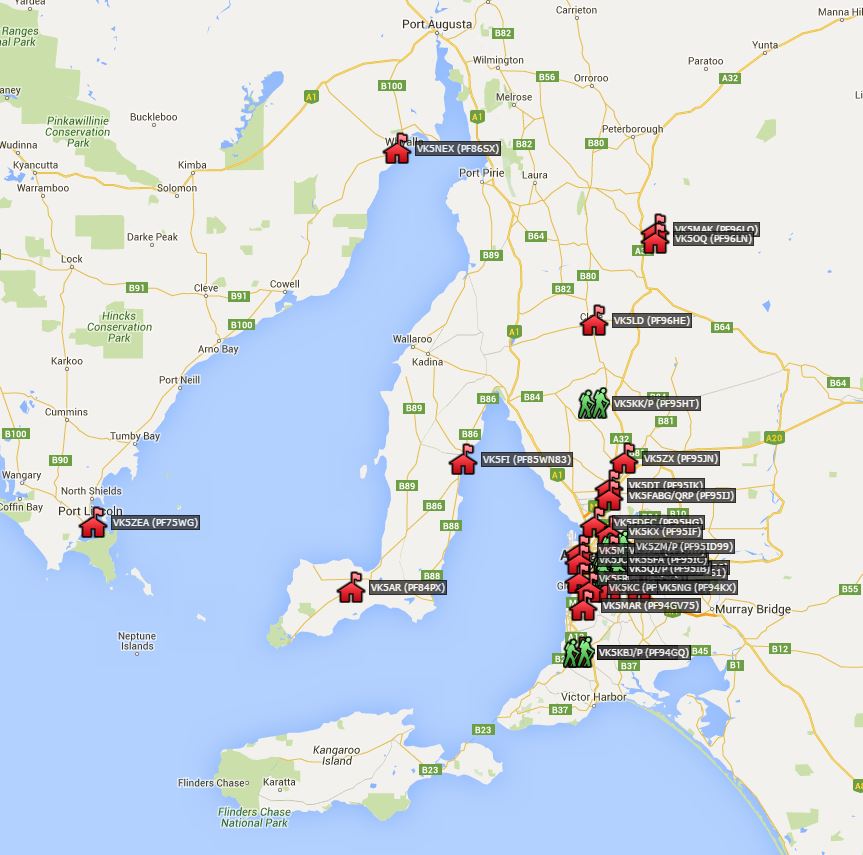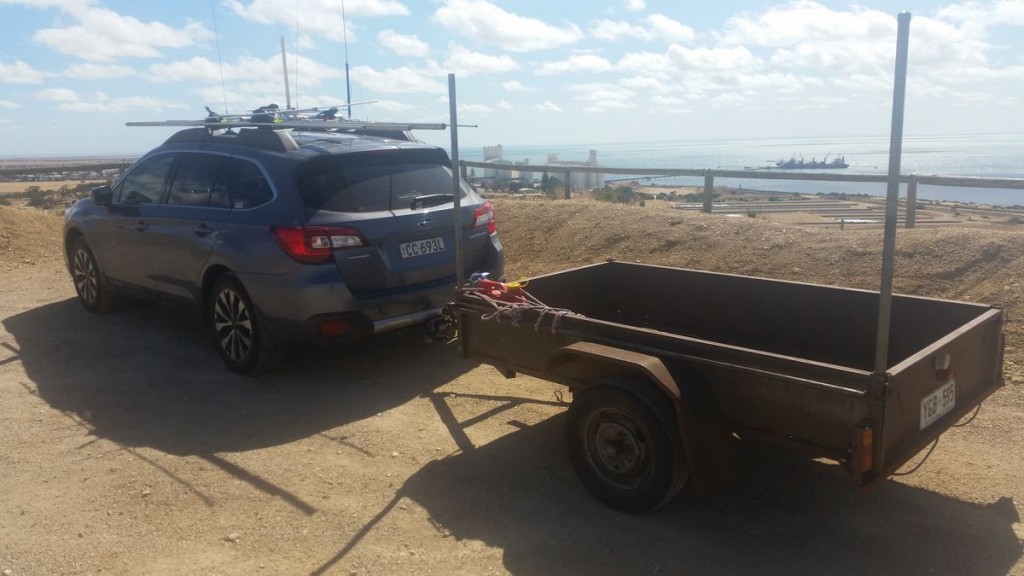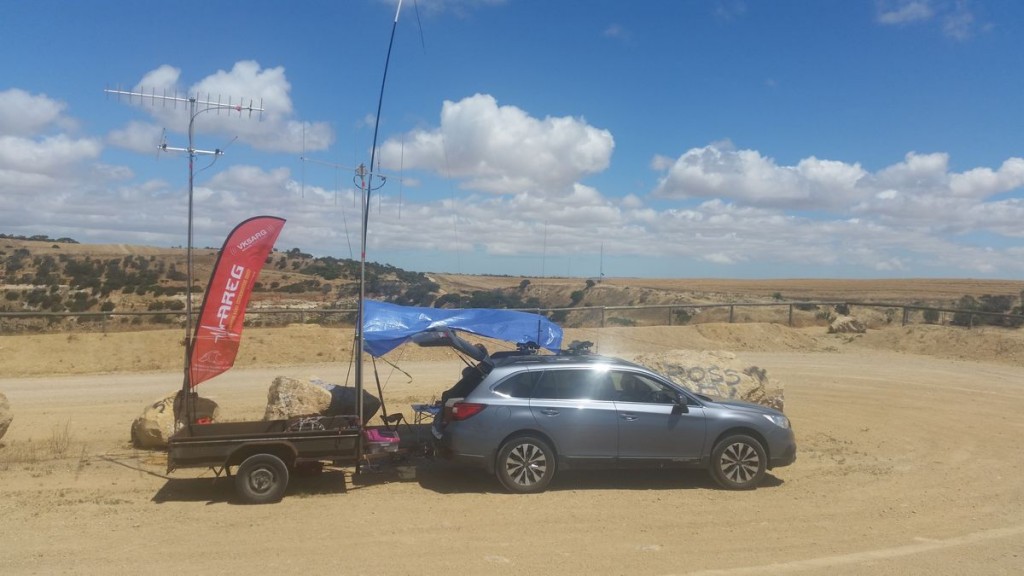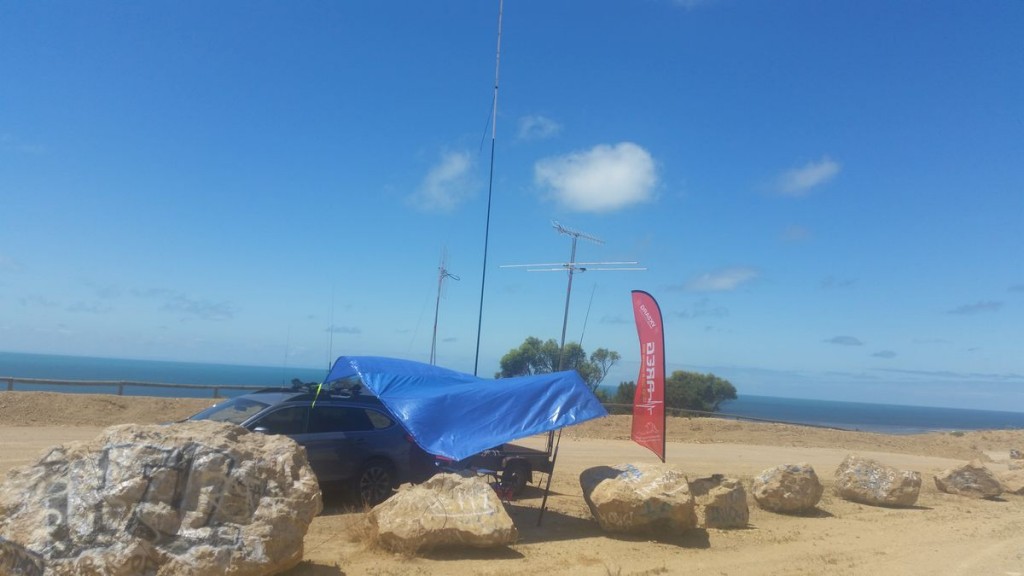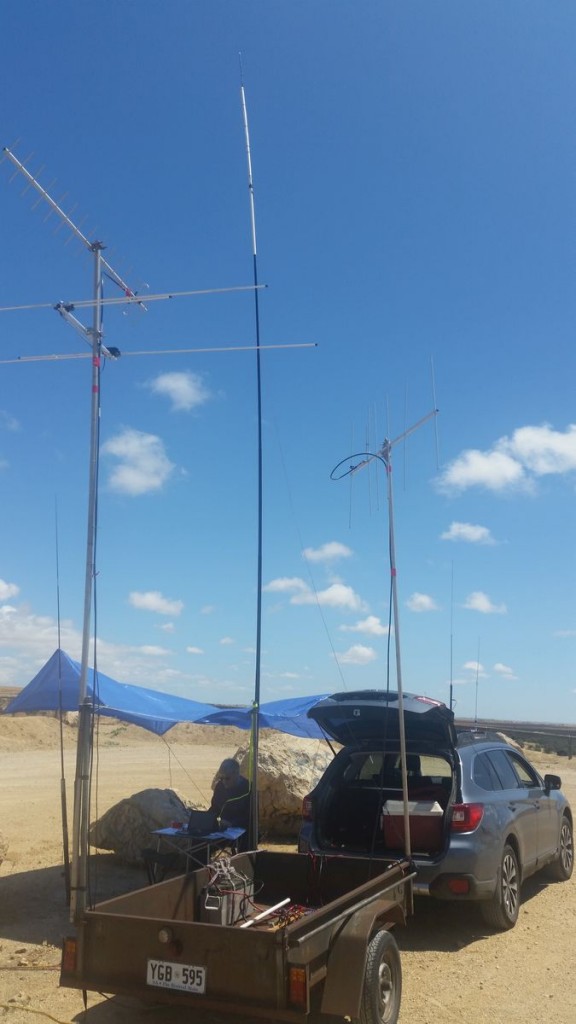For the VKFF Activation weekend, we found the time to get out to one of the new SA parks that had recently been added to the VKFF list. On the Saturday afternoon, we were able to get out to the Ramco Point CP – VKFF-0930
This is a little gem of a park that at first it is unclear on it’s boundaries, but with a little bit of searching, we were able to find it. The frustrating bit is this park is not listed on Google Maps but it is listed on the Protected Planet Maps.
Now, this has not always been Ramco Point CP – as is evidence from the old signs on the borders to the park.
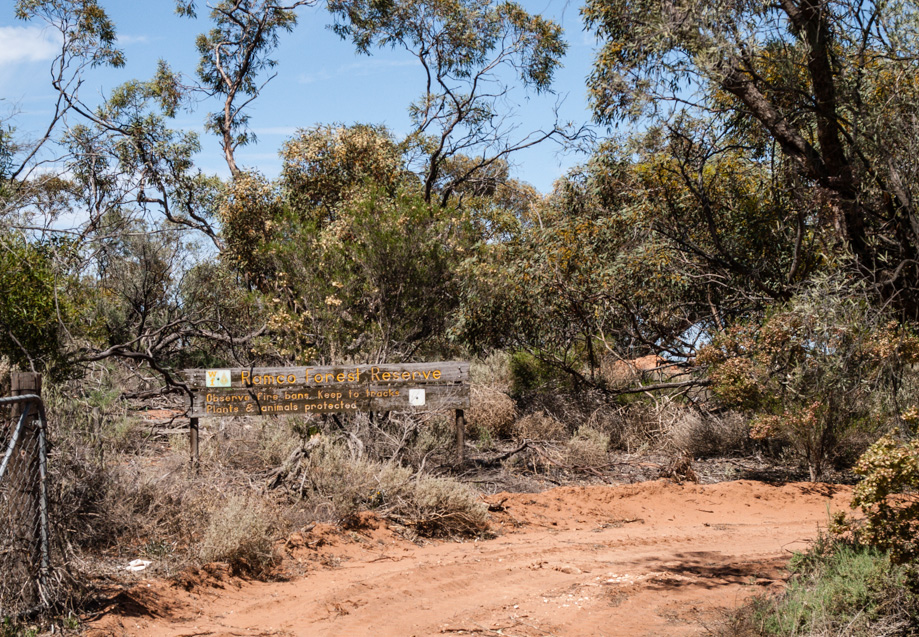
The park extends from between the Ramco Lagoon, up the cliff face to a small area adjacent to the Cadell Valley Road, where we entered the park.
We found a suitable spot not far from the top of the cliffs on an un-used track and set up. It was not the highest point in the park, but down the slope a bit which did offer a bit of extra protection should the wind have come up.
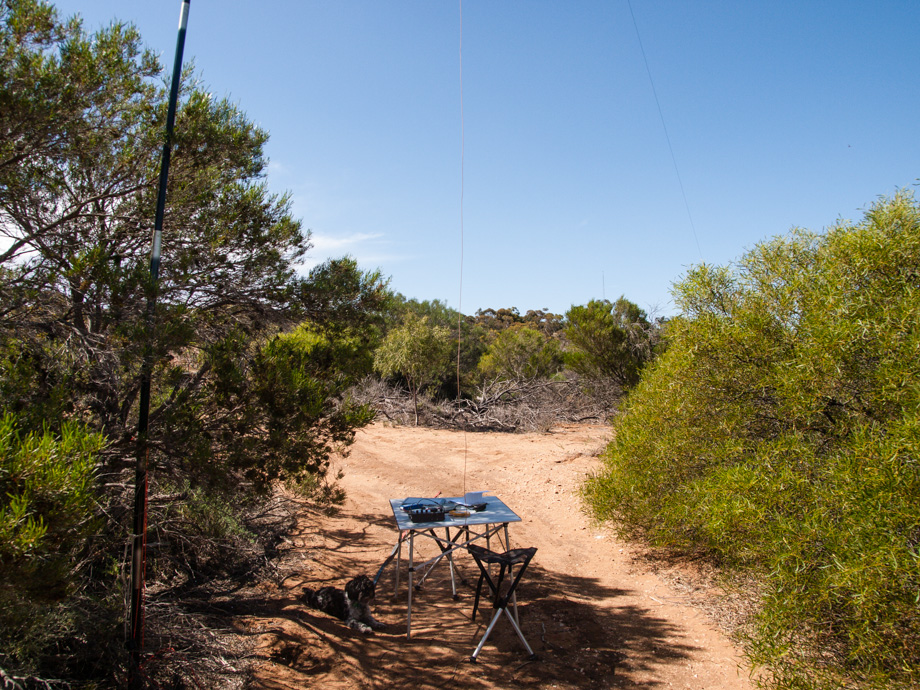
We picked a spot where there was a tree to tie up the squid pole and offer a bit of shade for the afternoon.
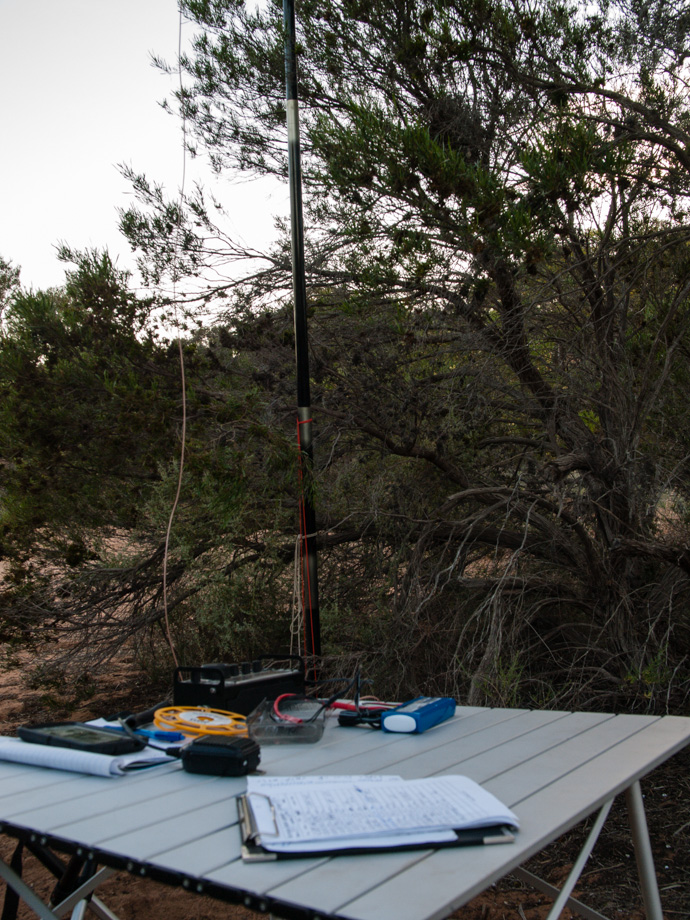
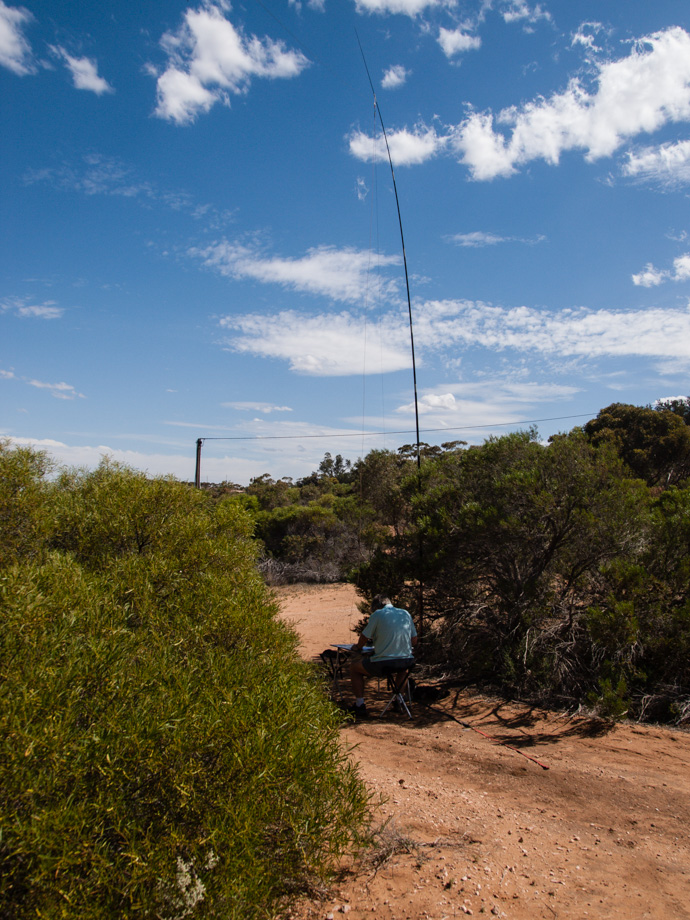
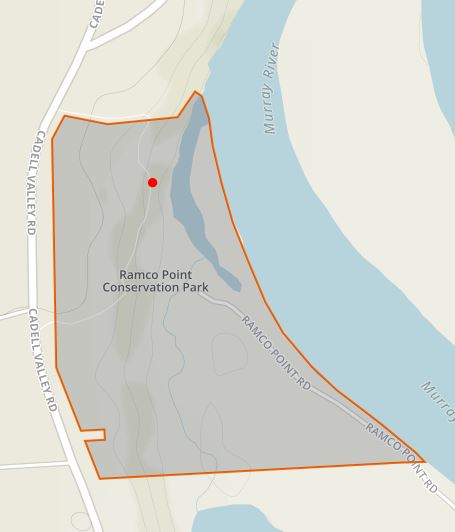
The red dot on the map was our operating position on the cliff top.
We arrived mid-afternoon as the hope was to work EU if 20M was open. We were a bit early so started out on 15M.
Once we were set up we called first on 15M and worked Rick VK4RF for the very first contact from Ramco Point CP as a VKFF park.
We made a handful of contacts before heading to 40M where we made quite a few more before trying 20M. Well, 20M did not really open up and we only had a single, very difficult DX contact on 20 with DK4RM, so we headed back to 40M and kept working the stations in an attempt to get the 44 and make it a valid WWFF activation.
A highlight was to work Peter, VK3YE who was flying a kite on Chelsea beach to support a wire antenna on 40M,
As the day went on 40M also improved and eventually, we had logged 44 contacts! We did work a few more as there were a couple of duplicates in the logs – with contacts on different bands and also a couple of others who had moved to different parks.
The Results
We ended the day with 53 stations logged, 4 on 15M, 6 on 20M and 43 on 40M and in the mix we worked 11 VKFF Park to Park contacts. With just 2 repeats (different bands), 1 duplicate, and another contact that was with VK3ZPF from 2 different parks, we well and truly passed the 44 with a total of 48 unique contacts for the day.
Of course, Ramco Point CP also qualifies for the SANPCA as well, and this was a new one for me as an activator.
This was also a good day, as before we went out to the park I logged a further 7 VKFF parks as a chaser – and that is well over 1/2 of the activators who were out on Saturday who I logged.
Just before packing up, I walked to the cliff-top to take in the spectacular views offered here.
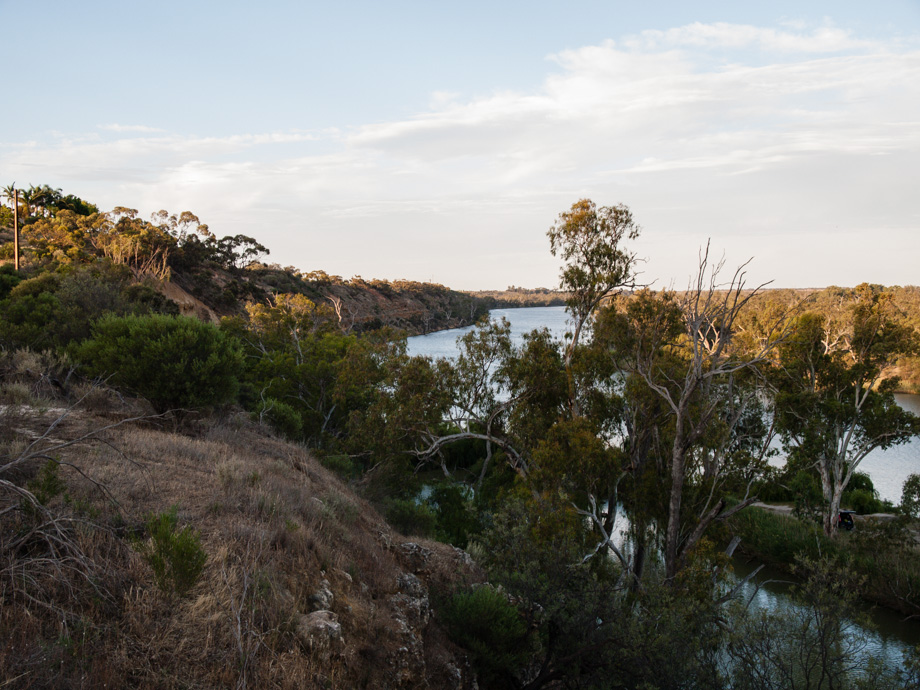
The view downstream – right in the foreground down the cliff you can see the backwater where the Ramco Lagoon flows into the Murray River.
If you look at the map, from our operating position, this is the view towards to top of the map
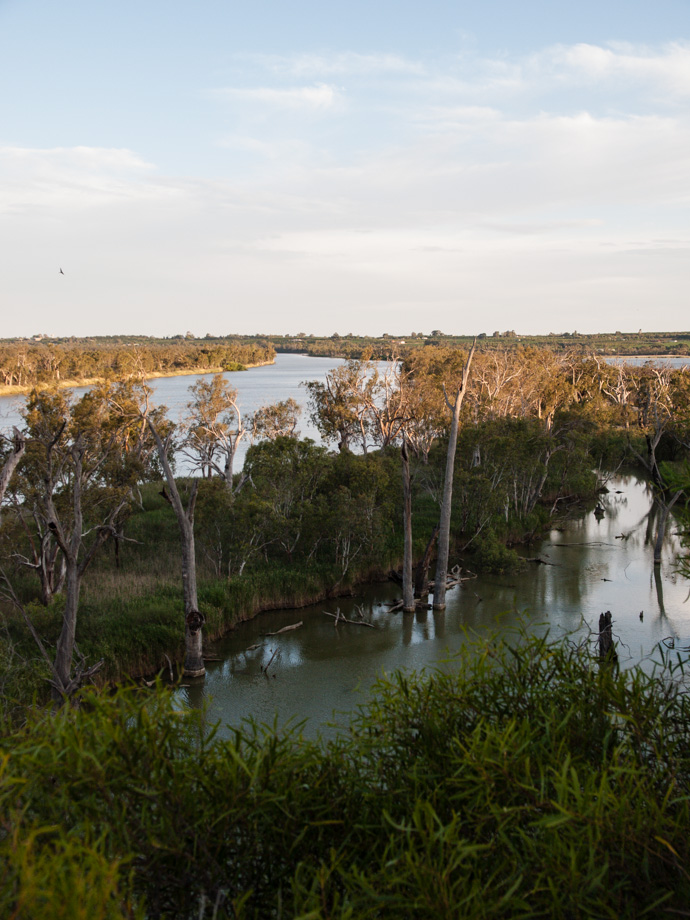
Looking upstream, again with the Ramco Lagoon in the foreground and a bit more to the right, then the Murray River all the way back to Waikerie. This is the view from the red dot towards the bottom right on the map.
We were blessed with a very pleasant operating spot, a few steps away from spectacular view up and down the Murray River and a really nice day with temperatures in the mid 20’s – It simply doesn’t get much better than this!

